Fasken's lawyers have begun a series on the role of critical minerals in energy transition from a Canadian perspective, bringing fresh insights on issues of mining, energy, environmental, Indigenous, climate change, tax, and national security. In the first, second, third, fourth, fifth and sixth instalments of this series, we examined the role of the Canadian federal government as well as all the Canadian provinces. In this seventh and last instalment, we examine the initiatives taken by the territories: Nunavut, the Northwest Territories and Yukon.
The Government of Nunavut has released a 2020 Overview on Mining, Mineral Exploration and Geoscience 1.
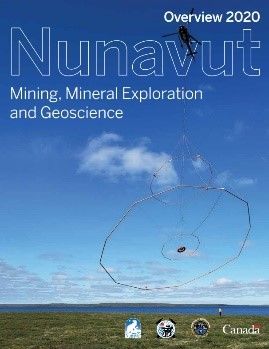
Nunavut spans two million square kilometres. It represents 25% of Canada's land mass. It has a population of 39,553 people and they live in 25 communities. 84 percent of the residents are Inuit. Its capital is Iqaluit.
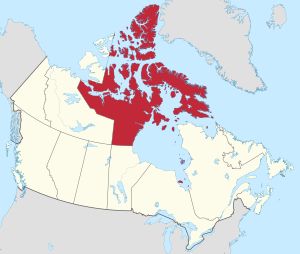
Nunavut is Canada's newest territory and the result of a modern treaty 2, which, according to the report, "provides certainty and clarity of rights to ownership and use of lands and resources within Nunavut." 3
Nunavut has tremendous resource potential. Four mines have been established over the past decade in Nunavut: the Hope Bay gold mine, the Meliadine and Meadowbank gold mine complexes (all three are Agnico Eagle operations), and the Mary River iron mine (Baffinland Iron Mines). The Government of Nunavut is committed to improving public geoscience as a mean of encouraging new exploration investment.
The document refers to the Canada-US Joint Action Plant on Critical Minerals Collaboration:
Early in 2020, Canada and the United States finalized the Canada-US Joint Action Plan on Critical Minerals Collaboration. The listing of the critical element commodities, called "critical minerals"-as determined by governments-include: aluminum, antimony, arsenic, barite, beryllium, bismuth, cesium, chromium, cobalt, fluorspar, gallium, germanium, graphite, hafnium, helium, indium, lithium, magnesium, manganese, niobium, PGEs, potash, REEs, rhenium, rubidium, scandium, strontium, tantalum, tellurium, tin, titanium, tungsten, uranium, vanadium, and zirconium. The world needs these critical minerals for important manufacturing sectors, including communication technology, aerospace and defence, and clean technology. The Action Plan will promote joint initiatives, including research and development cooperation, supply chain modelling and increased support for industry.
Of the 35 critical minerals outlined in the Action Plan, Nunavut has known occurrences of many: antimony, arsenic, barium/barium minerals, bismuth, chromium, cobalt, fluorite/fluorine minerals, graphite, lithium, manganese, niobium, PGE, REEs, tantalum, tellurium, titanium, tungsten, uranium and vanadium. Collecting and understanding fundamental geoscience (i.e., mapping and compilation) in Nunavut will allow the territory to play its part in further efforts to outline more of these critical minerals. 4
The Northwest Territories has a general Mineral Development Strategy 5 and it also has a 2030 Energy Strategy. 6
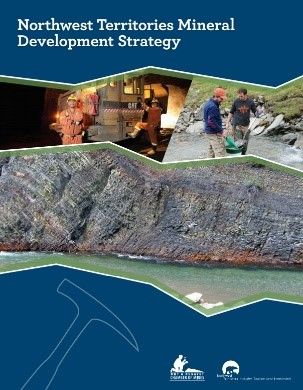
The Northwest Territories represents 13,5% of Canada's land mass. It has a population of 41,000 people living in 33 communities. Its capital is Yellowknife.
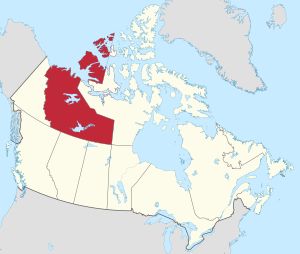
In the message from Premier Bob McLeod, we read: "The Northwest Territories has the potential to be an economic powerhouse; we have a wealth of economic resources, including diamond, gold, cobalt, bismuth, tungsten and rare earth elements." 7 The creation of this strategy involved consultations from Indigenous groups from each region of the Northwest Territories, and a pillar of the strategy is engagement and capacity building with Indigenous communities so they may effectively participate in all stages of the mineral development process and the regulatory process. 8 Beyond ensuring the strategy complies with land claims agreements and Aboriginal rights and title, it includes the principle of ensuring "[respect for] traditional lifestyles." 9
The Yukon government released its Mineral Development Strategy and Recommendations 10 in December 2020.
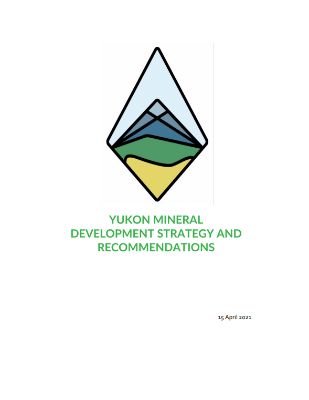
The Yukon Territory is the smallest of the three territories. It spans 482,443 km², it has a population of 38,000 people in 29 settlements and its capital is Whitehorse.
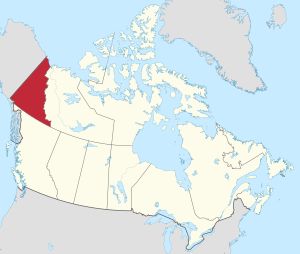
The strategy identifies several strategic priorities, including Strategic Priority No. 5: "Demonstrate environmental responsibility and preparedness to adopt practices to address climate change including utilization of green energy measures." Here, the territory states that "The need for minerals used to manufacture the products Yukoners use to support our high quality of life was also noted, especially critical minerals required for the green economy." 11 The territory plans to do this by establishing a modern mineral resource management regime that aligns with all treaties and agreements with Indigenous peoples, the UN Declaration on the Rights of Indigenous Peoples, and the recommendations of Canada's Truth and Reconciliation Commission. 12
On the demand side, the Yukon government has released a policy paper, Our Clean Future: A Yukon Strategy for Climate Change, Energy and a Green economy. 13
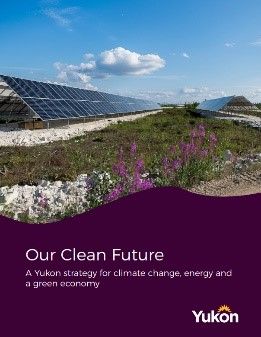
The policy identifies the following four goals:
- Reduce Yukon's greenhouse gas emissions
- Ensure Yukoners have access to reliable, affordable and renewable energy
- Adapt to the impacts of climate change
- Build a green economy
The paper recognizes the role of mining in the energy transition: "Mining plays a central role in the transition to a green economy. Minerals are vital to low carbon technologies - from batteries to wind turbines, solar panels and electric vehicles. Meeting an emissions intensity target will help Yukon's mining industry sustainably produce the materials needed for the global green economy." 14
The paper anticipates greenhouse gas reduction of 201 kilotonnes by 2030, short of the objective of 263 kilotonnes to reach 30% target required by the Paris Agreement. One call to action of the Yukon government is to increase the number of zero-emission vehicles on the road, which also means more fast-charging stations across the territory.
Interestingly, the paper says that legislation should be drafted by 2024 that will enable private businesses to sell electricity for the purpose of electric vehicles charging.
There is another mention, almost in passing, of critical minerals in the paper: "As demand for metals like copper, iron and lead increases to build more solar panels and other clean energy technologies, it is important that mining activities be energy efficient." 15
There are no references to the need for mining for critical minerals in the territory.
Conclusion
It is certainly too early to offer conclusions on whether we have a supply policy with respect to critical minerals that matches our policies to encourage demand for battery-electric vehicles, wind farms and solar panels, especially as the provinces of Ontario and Alberta have not released their final strategy papers on the topic.
That said, upon reviewing all these policies, papers, documents and plans, one cannot help but feel uneasy.
As a country, we are making an enormous effort, a special effort, to encourage our citizens to electrify their consumer goods, for example, buying electric cars. But we do not make a corresponding effort on the supply side. Thus far, only Québec has realized that there must be a match between demand and supply.
Sweden, a country that Canadian law-makers and citizens often study, had this to say in its Mineral Strategy: "Green growth without access to raw materials for green technology is unfeasible." 16
If we do not also make a special effort to find more critical minerals in our country, we may well find ourselves in the situation outlined by the International Energy Agency in the Report on Critical Minerals in the Energy Transition:
The prospect of a rapid increase in demand for critical minerals-well above anything seen previously in most cases-raises huge questions about the availability and reliability of supply. In the past, strains on the supply-demand balance for different minerals have prompted additional investment and measures to moderate or substitute demand. But these responses have come with time lags and have been accompanied by considerable price volatility. Similar episodes in the future could delay clean energy transitions and push up their cost. 17
So, here we are: we are pushing very hard to encourage demand, but are we pushing hard enough to encourage supply? It does not seem that we are.
In fact, if we look at the papers, frameworks and discussions on the topic of energy transition, we make an extraordinary effort to convince and coerce Canadians to switch from internal-combustion engines to electric vehicles. In some cities, internal-combustion engines will be banned in 2035.
If we take into consideration that mining projects take an average of 16 years to reach production, it is clear that our goals are extremely optimistic. If, by 2035, lithium, cobalt and graphite mines in Canada are not producing the minerals necessary to electrify the Canadian automotive industry, we must resort to minerals supplied by countries that may not meet the same environmental standards as our own. Most Canadians would find this result unacceptable.
A gap remains between Canada's decarbonization goals and the supply-side policy required to electrify our energy and automotive industries. Moreover, as a country rich in critical minerals, Canada is in a unique position to support the development of a global low-carbon economy with high environmental and social standards. By surveying and examining Canada's provincial territorial and national critical minerals initiatives, we publish this series to advance efforts to increase regulatory certainty and close this gap.
The Authors wish to thank Claude Jodoin (Tax), Janet Howard (Electricity), Allison Sears (Hydrogen), Andrew House (National Security), and Emilie Bundock (Indigenous law) for their contributions.
Footnotes
1. Available online:
https://www.gov.nu.ca/sites/default/files/exploration_overview_2020-english.pdf
[The Nunavut Plan]
2. The Nunavut Land Claims Agreement, enacted into law by the Nunavut Land Claims Agreement Act (SC 1993, c. 29).
3. The Nunavut Plan, page 4
4. The Nunavut Plan, page 21
5. Available online:
https://www.iti.gov.nt.ca/sites/iti/files/nwt_mineral_development_strategy.pdf
[The Northwest Territories Strategy]
6. Available online:
https://www.inf.gov.nt.ca/sites/inf/files/resources/gnwt_inf_7047_energy_strategy_p7_0.pdf
7. The Northwest Territories Strategy, page 4
8. The Northwest Territories Strategy, page 19
9. The Northwest Territories Strategy, page 13
10. Available online:
https://yukon.ca/sites/yukon.ca/files/emr/emr-yukon-mineral-development-strategy-recommendations.pdf
[The Yukon Mineral Strategy]
11. The Yukon Mineral Strategy, page 42
12. The Yukon Mineral Strategy, page 16
13. Available online:
https://yukon.ca/sites/yukon.ca/files/env/env-our-clean-future.pdf
[The Yukon Climate Change Strategy]
14. The Yukon Climate Change Strategy, page 13
15. The Yukon Climate Change Strategy, page 60
16. Available online:
https://www.government.se/contentassets/78bb6c6324bf43158d7c153ebf2a4611/swedens-minerals-strategy.-for-sustainable-use-of-swedens-mineral-resources-that-creates-growth-throughout-the-country-complete-version#:~:text=The%20Swedish%20minerals%20strategy%20takes,demand%20for%20metals%20and%20minerals
page 8
17. The Report, page 11
The content of this article is intended to provide a general guide to the subject matter. Specialist advice should be sought about your specific circumstances.




